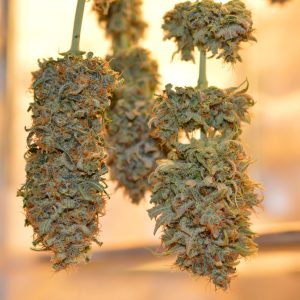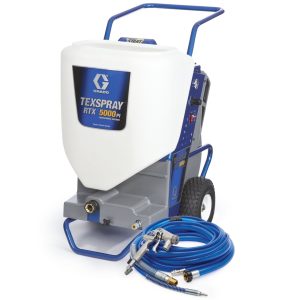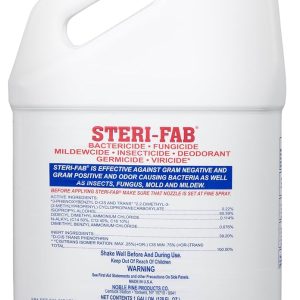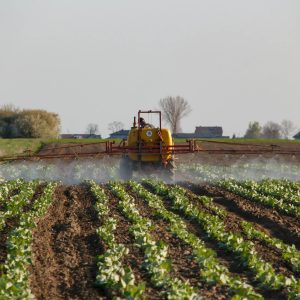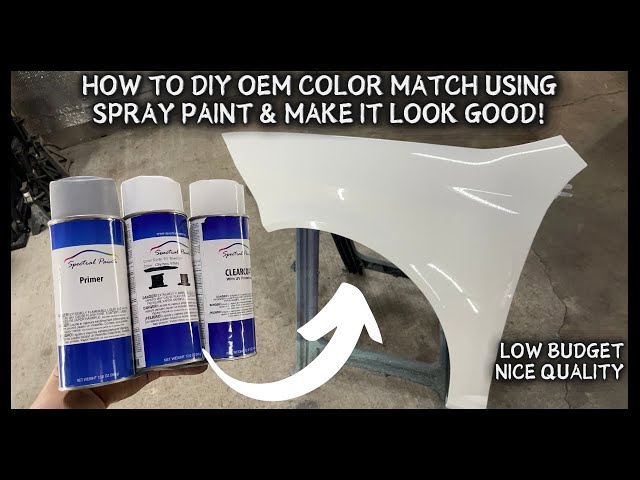
What is Color Match Spray Paint and Why Does It Matter?
Color match spray paint represents one of the most challenging yet rewarding aspects of restoration, repair, and creative projects. Whether you’re touching up automotive scratches, restoring vintage furniture, or completing a complex DIY project, achieving a perfect color match can mean the difference between a professional-looking result and an obvious repair attempt.
The science behind color matching involves understanding how pigments interact with light, surface textures, and environmental conditions. Unlike standard spray paints that come in predetermined colors, color match spray paint requires careful analysis of the existing surface, precise color formulation, and often custom mixing to achieve an invisible repair. This process becomes even more complex when dealing with metallic finishes, pearl coats, or weathered surfaces that have changed color over time.
Professional painters and restoration experts understand that successful color matching extends beyond simply matching the visual appearance. Factors such as paint chemistry compatibility, surface preparation requirements, and long-term durability must all be considered when selecting the appropriate color matching spray paint system for any given project.
Understanding Color Theory for Perfect Spray Paint Matching
Color theory forms the foundation of successful color match spray paint applications. The human eye can distinguish between millions of different color variations, making precise matching both an art and a science. Understanding the three primary components of color – hue, saturation, and brightness – enables better decision-making when attempting to match existing finishes.
Hue represents the basic color family, such as red, blue, or yellow. Saturation refers to the intensity or purity of the color, while brightness indicates how light or dark the color appears. When working with color match spray paint, each of these elements must be carefully considered and adjusted to achieve a seamless blend with the existing surface.
Metamerism presents another critical challenge in color matching. This phenomenon occurs when two colors appear identical under one type of lighting but different under another. For example, a color match spray paint that looks perfect under fluorescent workshop lighting might appear noticeably different under natural sunlight. Professional color matching systems account for this by testing matches under multiple light sources before finalizing the formula.
Key Color Matching Factors:
- Light source temperature (daylight vs. incandescent vs. LED)
- Surface texture and reflectivity
- Viewing angle and distance
- Surrounding colors that influence perception
- Age-related color shifts in the original surface
Professional Color Matching Tools and Equipment
Modern color match spray paint success relies heavily on sophisticated tools and equipment designed to analyze and replicate colors with scientific precision. Spectrophotometers represent the gold standard in professional color matching, using advanced sensors to measure the exact wavelengths of light reflected from a surface. These devices can detect color variations invisible to the human eye and provide precise formulation data for custom paint mixing.
Digital color matching systems have revolutionized the color matching spray paint industry by creating vast databases of color formulas linked to specific product codes, vehicle identification numbers, and manufacturer specifications. These systems can often provide an exact match within minutes, significantly reducing the trial-and-error approach that characterized earlier color matching efforts.
Portable colorimeters offer a more accessible option for smaller operations or DIY enthusiasts serious about achieving professional results. While not as comprehensive as full spectrophotometer systems, these devices can provide accurate color readings and connect to smartphone apps that suggest matching paint formulas from major manufacturers.
Professional Color Matching Equipment:
| Equipment Type | Accuracy Level | Price Range | Best Use Case |
|---|---|---|---|
| Spectrophotometer | ±0.1 Delta E | $15,000-50,000 | Professional shops |
| Digital Color Matcher | ±0.3 Delta E | $3,000-10,000 | Medium operations |
| Portable Colorimeter | ±0.5 Delta E | $500-2,000 | Small shops/DIY |
| Color Matching Apps | ±1.0 Delta E | $50-200 | Hobbyist level |
Automotive Color Match Spray Paint Techniques
Automotive applications represent the most demanding sector for color match spray paint work, where precision and durability requirements exceed those found in most other industries. Modern vehicles often feature complex multi-layer paint systems including primer, base coat, color coat, and clear coat layers, each requiring specific matching considerations.
Factory automotive paints frequently incorporate special effect pigments such as metallic flakes, pearl particles, or color-shifting compounds that create depth and movement in the finish. Successfully matching these effects with color matching spray paint requires understanding not only the base color but also the size, concentration, and orientation of effect particles within the paint film.
The automotive refinishing industry has developed standardized procedures for color match spray paint applications that ensure consistent results across different shops and technicians. These procedures typically involve creating test panels that replicate the exact substrate, surface preparation, and application conditions that will be used on the actual repair.
Automotive Color Matching Process:
- Clean and assess the area to be matched
- Identify paint code from vehicle identification sources
- Retrieve base formula from paint manufacturer database
- Create test spray-out on appropriate substrate
- Compare under multiple light sources for accuracy
- Adjust tint formula as needed for perfect match
- Document final formula for future reference
Weather and environmental exposure significantly impact automotive paint appearance over time. UV radiation, acid rain, road salt, and general wear can cause color shifts that make factory paint codes inadequate for matching purposes. Professional automotive color match spray paint work often requires “let-down” panels that demonstrate how the fresh paint will look once it has had time to cure and develop its final appearance characteristics.
Furniture and Wood Color Matching with Spray Paint
Furniture restoration and woodworking projects present unique challenges for color match spray paint applications due to the organic nature of wood substrates and the variety of stains, finishes, and aging effects commonly encountered. Unlike automotive applications where the substrate remains relatively consistent, wood surfaces can vary dramatically in porosity, grain pattern, and natural color variation.
Traditional wood stains and finishes often penetrate into the wood fibers, creating color depth that cannot be replicated with surface-applied color matching spray paint alone. Successful furniture color matching frequently requires a combination of techniques including base staining, toner application, and protective topcoats to achieve authentic-looking results.
The grain pattern and wood species significantly influence how color match spray paint appears on the finished surface. Open-grain woods like oak or ash may require grain filling before paint application to achieve a smooth finish, while closed-grain species like maple or cherry can often be painted directly. Understanding these substrate differences enables better planning and more predictable results.
Wood Color Matching Considerations:
- Wood species and natural color variation
- Grain pattern and surface texture
- Previous finish type and removal requirements
- Stain penetration depth and uniformity
- Aging effects and patina development
- Environmental exposure history
Antique and vintage furniture often displays complex color patterns resulting from decades of use, cleaning, and natural aging. These pieces may show lighter areas where hands have worn the finish, darker spots where moisture has penetrated, or overall color shifts due to UV exposure. Replicating these natural aging effects with color match spray paint requires careful observation and often multiple color applications to build up the appropriate depth and variation.
DIY Color Matching Strategies and Tips
Home enthusiasts and DIY practitioners can achieve excellent color match spray paint results by following proven strategies adapted from professional techniques. While lacking access to expensive color matching equipment, careful observation and systematic testing can produce surprisingly accurate matches for most common applications.
The key to successful DIY color matching lies in understanding that the human eye excels at detecting color differences when samples are placed side by side. Creating accurate test samples becomes crucial for evaluating potential matches before committing to the full project. These test samples should be created on the same type of surface and under similar conditions as the final application.
Natural lighting provides the most accurate reference for color evaluation, as artificial lighting can significantly distort color perception. Professional painters recommend evaluating color match spray paint samples outdoors during midday hours when the sun provides the most neutral light source. Additionally, checking samples under the specific lighting conditions where the finished project will be viewed helps ensure satisfaction with the final result.
DIY Color Matching Steps:
- Clean the target surface thoroughly to reveal true color
- Take multiple photos under different lighting conditions
- Visit paint stores with physical samples when possible
- Purchase small test quantities of likely matches
- Create test panels on identical substrate material
- Evaluate matches under various lighting conditions
- Adjust or remix as needed before final application
Color perception can be influenced by surrounding colors, making it important to evaluate color matching spray paint samples in the context where they will be used. A color that appears perfect in isolation might look noticeably different when surrounded by other colors in the actual application environment.
Common Color Matching Mistakes and How to Avoid Them
Even experienced painters encounter challenges when working with color match spray paint, and understanding common pitfalls helps prevent frustrating and expensive mistakes. One of the most frequent errors involves attempting to match colors under inappropriate lighting conditions, leading to selections that appear incorrect once moved to their intended environment.
Rushing the color matching process often results in poor outcomes, as proper evaluation requires time for the eye to adjust and for paint samples to fully develop their final appearance. Many color matching spray paint formulations continue to change color slightly as solvents evaporate and the paint film cures, making immediate evaluation unreliable.
Surface preparation plays a crucial role in color matching success, yet it’s often overlooked by those focused primarily on getting the color right. The same color match spray paint can appear dramatically different when applied over different primer colors, surface textures, or contaminated substrates. Professional results require attention to all aspects of the painting system, not just the topcoat color.
Common Color Matching Errors:
- Evaluating matches under poor lighting conditions
- Ignoring surface preparation requirements
- Failing to account for texture differences
- Not testing spray pattern and application technique
- Overlooking environmental factors during application
- Insufficient mixing of multi-component systems
Temperature and humidity during application can significantly affect how color match spray paint appears once dry. High humidity can cause color shifts in some paint systems, while extreme temperatures may affect flow characteristics and final gloss levels. Professional painters maintain detailed records of environmental conditions during successful projects to enable consistent reproduction of results.
Advanced Color Matching Techniques for Professionals
Professional color match spray paint work often requires advanced techniques that go beyond basic color selection and application. Tinting and adjustment procedures enable fine-tuning of colors that are close but not quite perfect, often making the difference between amateur and professional-level results.
Blend panels represent a sophisticated approach to color matching that creates gradual transitions between the new paint and existing finish. This technique proves especially valuable when dealing with slight color variations that cannot be eliminated through mixing adjustments alone. The gradual transition makes any remaining color difference virtually invisible to casual observation.
Advanced Professional Techniques:
| Technique | Application | Difficulty Level | Results Quality |
|---|---|---|---|
| Tint Adjustment | Fine color tuning | Intermediate | Excellent |
| Blend Panels | Seamless transitions | Advanced | Superior |
| Multi-coat Systems | Complex finishes | Expert | Premium |
| Effect Matching | Metallic/Pearl | Expert | Showroom |
Multi-stage paint systems allow professionals to build complex color effects that cannot be achieved with single-stage color match spray paint applications. These systems might include a colored base coat followed by translucent toner layers and protective clear coats, each contributing to the final appearance. While more time-consuming and expensive, multi-stage systems often provide the only path to matching certain factory finishes accurately.
Effect particle orientation becomes critical when matching metallic or pearl finishes with color matching spray paint. The application technique, spray gun settings, and environmental conditions all influence how effect particles settle within the paint film, directly affecting the final appearance. Professional painters develop specific techniques for each type of effect finish to ensure consistent results.
Spray Paint Color Matching for Different Materials
Different substrate materials present unique challenges for color match spray paint applications, requiring modified approaches and sometimes specialized paint formulations. Metal surfaces typically provide the most predictable results due to their non-porous nature and uniform appearance, while porous materials like concrete or unfinished wood require additional considerations.
Plastic substrates often require special color matching spray paint formulations designed to adhere properly and flex with the material without cracking or peeling. Some plastics are particularly challenging to paint due to their low surface energy, requiring flame treatment, chemical etching, or specialized primer systems before acceptable adhesion can be achieved.
Glass and ceramic surfaces present their own unique requirements for color match spray paint applications. These substrates typically require high-temperature curing or specialized paint chemistry to achieve durable results. Additionally, the transparent or highly reflective nature of these materials can significantly affect color appearance compared to opaque substrates.
Material-Specific Considerations:
- Metal: Surface oxidation and primer compatibility
- Plastic: Adhesion promotion and flexibility requirements
- Wood: Grain texture and moisture content effects
- Glass: Transparency and high-temperature curing needs
- Concrete: Porosity and alkalinity considerations
- Fabric: Penetration and flexibility requirements
Temperature resistance requirements vary significantly based on the intended application environment. Automotive color match spray paint must withstand engine heat and direct sunlight, while indoor furniture applications face much less demanding thermal conditions. Understanding these requirements helps ensure appropriate paint system selection and long-term durability.
Technology and Innovation in Color Matching
The color match spray paint industry continues to evolve rapidly with new technologies improving both accuracy and efficiency of color matching processes. Artificial intelligence and machine learning algorithms now power some color matching systems, analyzing vast databases of color formulations to predict optimal starting points for custom matches.
Smartphone applications have democratized access to basic color matching capabilities, allowing users to photograph surfaces and receive suggested paint matches from major manufacturers. While not as accurate as professional equipment, these apps provide valuable starting points for color matching spray paint projects and help users communicate color requirements more effectively with paint suppliers.
Cloud-based color databases enable real-time sharing of color formulations between different locations, ensuring consistent results across multiple shops or project sites. These systems often include update capabilities that allow refinement of formulations based on real-world results, continuously improving accuracy over time.
Emerging Technologies:
- AI-powered color analysis and formula prediction
- Smartphone color matching apps and tools
- Cloud-based formula sharing and updates
- Spectral imaging for complex surface analysis
- Robotic application systems for consistency
- Real-time quality monitoring during application
Virtual reality and augmented reality technologies are beginning to find applications in color matching, allowing users to visualize how different color match spray paint options will appear in specific environments before making final selections. These technologies help eliminate guesswork and reduce the need for multiple test applications.
Quality Control and Testing Methods
Professional color match spray paint operations implement rigorous quality control procedures to ensure consistent results and customer satisfaction. Standardized test panels created under controlled conditions provide objective references for evaluating color accuracy and application quality before committing to full-scale projects.
Instrumental color measurement using spectrophotometers or colorimeters provides quantitative data about color accuracy that eliminates subjective interpretation. These measurements can be documented and referenced for future projects, building a database of successful formulations and application parameters.
Visual evaluation procedures complement instrumental measurements by assessing factors that instruments cannot measure, such as texture match, gloss uniformity, and overall aesthetic integration. Professional evaluators use standardized viewing conditions and systematic comparison methods to ensure comprehensive assessment of color matching spray paint results.
Quality Control Methods:
- Instrumental color measurement for objective data
- Standardized test panels for consistent evaluation
- Multiple lighting assessment for metamerism detection
- Texture and gloss evaluation for complete matching
- Long-term durability testing for performance validation
- Customer approval processes for satisfaction assurance
Environmental testing evaluates how color match spray paint systems perform under accelerated aging conditions that simulate years of exposure in compressed timeframes. These tests help predict long-term color stability and identify potential issues before they occur in real-world applications.
Cost Considerations and Value Analysis
Color match spray paint projects involve various cost factors beyond the price of paint materials, including labor time for color development, test applications, and potential rework if initial matches prove inadequate. Understanding these total costs helps in making informed decisions about project scope and quality expectations.
Professional color matching services typically charge premium rates due to the specialized equipment, expertise, and time required to achieve accurate results. However, these costs often prove economical when compared to the expense of poor matches that require complete refinishing to achieve satisfactory results.
DIY approaches to color matching spray paint can reduce labor costs but may require multiple attempts and material waste before achieving acceptable results. The value equation depends heavily on the complexity of the match required and the consequences of imperfect results in the specific application.
Cost Analysis Factors:
| Cost Component | Professional Service | DIY Approach |
|---|---|---|
| Equipment Access | Included in service | Purchase required |
| Color Development | $50-200 per match | Time investment |
| Material Waste | Minimized | Potentially high |
| Rework Risk | Low | Moderate to high |
| Time Investment | Minimal client time | Substantial |
| Result Quality | Consistently high | Variable |
Insurance and warranty considerations may favor professional color match spray paint services for high-value applications where mistakes could result in significant financial consequences. Professional services typically offer guarantees on their work and carry insurance coverage for potential issues.
Environmental and Safety Considerations
Color match spray paint operations must address various environmental and safety concerns related to volatile organic compound (VOC) emissions, hazardous material handling, and waste disposal requirements. Modern paint formulations increasingly emphasize reduced environmental impact while maintaining performance characteristics.
Proper ventilation systems are essential for safely handling color matching spray paint materials, as many formulations contain solvents that can pose health risks if exposure levels become excessive. Professional spray booths incorporate sophisticated filtration systems that protect both workers and the environment from harmful emissions.
Personal protective equipment requirements vary based on the specific color match spray paint formulations being used, but typically include respiratory protection, eye protection, and skin protection. Understanding and following safety data sheet (SDS) requirements ensures safe handling throughout the color matching and application process.
Safety Equipment Requirements:
- Respiratory protection appropriate for specific chemicals
- Eye protection from overspray and chemical splash
- Skin protection including gloves and coveralls
- Ventilation systems for vapor control
- Fire suppression equipment for flammable materials
- Emergency procedures for spill cleanup and exposure
Waste disposal regulations govern the handling of unused color match spray paint, contaminated materials, and cleaning solvents. Many jurisdictions classify these materials as hazardous waste requiring special disposal procedures and documentation.
Industry Applications and Case Studies
Automotive collision repair represents the largest market segment for color match spray paint services, with millions of vehicles requiring paint matching annually. Case studies from this industry demonstrate the economic importance of accurate color matching, as poor matches can result in customer dissatisfaction and expensive rework.
A major automotive refinishing chain documented a 40% reduction in customer complaints after implementing advanced color matching spray paint technology and standardized procedures. This improvement translated directly into increased customer retention and reduced warranty costs, demonstrating the business value of investing in quality color matching capabilities.
Architectural restoration projects often require color match spray paint work to maintain historical accuracy while meeting modern durability requirements. A notable case involved matching 1920s-era paint colors on a landmark building using spectral analysis of paint samples combined with period-appropriate pigment selection.
Industry Success Metrics:
- Customer satisfaction scores above 95%
- First-time match success rates over 85%
- Rework rates below 5% of total jobs
- Color variation within ±1.0 Delta E units
- Durability performance meeting or exceeding specifications
Marine applications present unique challenges for color match spray paint due to harsh environmental conditions including salt water exposure, UV radiation, and temperature extremes. Successful marine color matching requires specialized paint formulations and application techniques developed specifically for these demanding conditions.
Popular Color Match Spray Paint Brands and Products
Several manufacturers dominate the color match spray paint market, each offering specialized products and systems designed for specific applications and performance requirements. Understanding the strengths and characteristics of different brands helps in selecting appropriate products for specific projects.
Professional-grade systems typically offer the most comprehensive color databases and highest quality formulations, while consumer products focus on ease of use and broad compatibility with common applications. The choice between these approaches depends on project requirements and quality expectations.
For those working on creative projects, ironlak spray paint offers excellent coverage and color consistency for artistic applications, though it may require color matching techniques when attempting to match existing surfaces.
Leading Brand Comparison:
| Brand | Market Focus | Database Size | Quality Level |
|---|---|---|---|
| PPG | Professional automotive | 100,000+ colors | Premium |
| Sherwin-Williams | Multi-industry | 75,000+ colors | High |
| AkzoNobel | Industrial/marine | 50,000+ colors | Premium |
| 3M | Automotive/industrial | 40,000+ colors | High |
| Rust-Oleum | Consumer/DIY | 15,000+ colors | Standard |
When selecting color match spray paint products, consider factors such as color database coverage for your specific application, local technical support availability, and compatibility with existing paint systems. Many manufacturers offer training programs and certification for their color matching systems.
Getting Started with Your Color Match Spray Paint Project
Beginning a color match spray paint project requires careful planning and realistic expectations about achievable results. Start by thoroughly documenting the surfaces to be matched through high-quality photographs taken under various lighting conditions and detailed notes about surface conditions and any special characteristics.
Research available resources in your area, including paint suppliers with color matching capabilities, professional services, and equipment rental options. Many paint stores offer basic color matching services that can provide good starting points even if not achieving perfect matches.
Gather necessary tools and materials before beginning work, including appropriate primer systems, surface preparation supplies, and protective equipment. Having everything ready before starting helps ensure smooth project progression and consistent results.
Project Planning Checklist:
- [ ] Document existing colors with photos and notes
- [ ] Research local resources and service options
- [ ] Gather tools and materials for complete project
- [ ] Plan workspace setup with proper ventilation
- [ ] Schedule adequate time for testing and adjustment
- [ ] Prepare backup plans for challenging matches
Success with color match spray paint projects often depends more on careful preparation and realistic expectations than on expensive equipment or exotic techniques. Focus on understanding the specific requirements of your project and selecting appropriate methods and materials accordingly.
Ready to start your color match spray paint project? Visit our comprehensive color matching resource center for detailed guides, product recommendations, and expert advice tailored to your specific application needs.
Frequently Asked Questions About Color Match Spray Paint
What is the best way to achieve accurate color match spray paint results?
The most reliable approach combines proper surface preparation, appropriate lighting for color evaluation, and systematic testing on sample panels before full application. Professional spectrophotometer analysis provides the highest accuracy, but careful visual matching under natural daylight can achieve excellent results for most applications.
How long does color match spray paint take to show its true color?
Most color match spray paint formulations require 24-48 hours to fully cure and display their final color characteristics. Some systems may continue subtle color development for up to a week, particularly metallic and pearl finishes where particle orientation affects appearance.
Can I match weathered or faded paint with color match spray paint?
Yes, but it requires matching the current faded color rather than the original fresh color. This often produces better visual integration than attempting to restore the original color, which would make the new paint appear obviously different from the surrounding weathered areas.
What’s the difference between automotive and furniture color match spray paint?
Automotive formulations typically offer superior durability, UV resistance, and chemical resistance due to harsh environmental exposure requirements. Furniture formulations often prioritize ease of application, lower odor, and compatibility with various substrate materials over extreme durability.
How much does professional color match spray paint service cost?
Professional color matching typically costs $75-300 for color development plus material and application costs. Complex matches requiring multiple attempts or special effect finishes may cost more. DIY approaches reduce labor costs but may require multiple material purchases to achieve satisfactory results.
Can smartphone apps accurately match colors for spray paint?
Smartphone color matching apps provide useful starting points but rarely achieve the accuracy needed for critical applications. They work best for general color family identification and initial product selection, with fine-tuning required through traditional testing methods.
What factors affect color match spray paint durability?
Key durability factors include UV exposure levels, temperature extremes, chemical exposure, substrate preparation quality, and paint system compatibility. Proper primer selection and surface preparation often have greater impact on longevity than topcoat selection alone.
